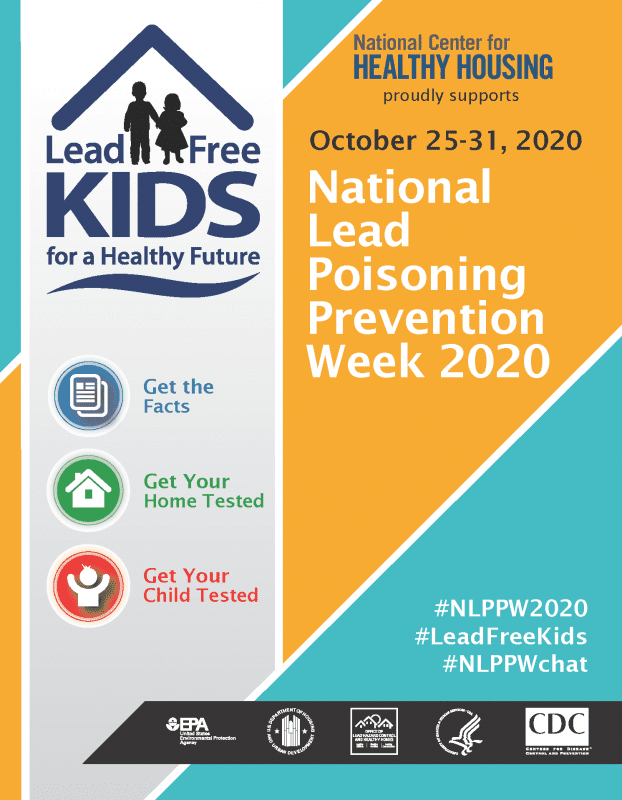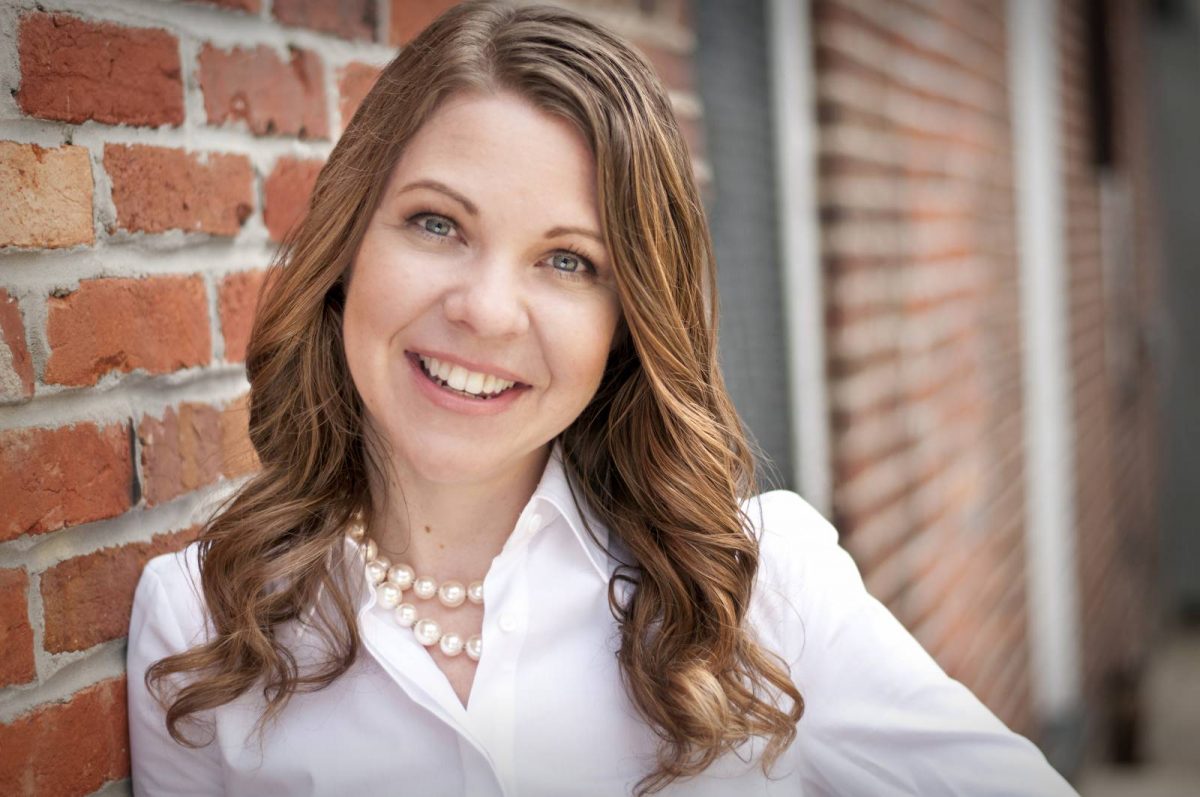Media Contact: Christopher Bloom, cbloom@nchh.org
COLUMBIA, MD (September 21, 2020) – The National Center for Healthy Housing is pleased to recognize National Lead Poisoning Prevention Week, October 25-31, 2020. NCHH will host and participate in outreach and educational activities designed to raise local awareness about the danger of lead exposure and poisoning and educate parents on how to reduce exposure to lead in their environment, prevent its serious health effects, and learn about the importance of testing children for lead.
National Lead Poisoning Prevention Week is a joint initiative of the U.S. Department of Housing and Urban Development (HUD), the Centers for Disease Control and Prevention (CDC), and the U.S. Environmental Protection Agency (EPA). The goal is to encourage organized, local community events, and to empower families and other stakeholders to take action.
“While lead poisoning prevention is important every day, National Lead Poisoning Prevention Week provides an opportunity to reflect on why we do what we do, to highlight the work of our partners across the country, and to get others excited about joining the fight to end childhood lead exposure,” said Amanda Reddy, NCHH Executive Director. “And this year, with many children spending close to 100% of their time at home, it’s more important than ever to make sure that home is a safe and healthy place for kids to grow and thrive.”
Among the outreach activities and events planned for the week-long observance include NCHH’s fourth annual #NLPPWchat on Twitter. Since its debut in 2017, the #NLPPWchat has grown in reach and popularity each year, and this year’s chat promises to be an even greater success. (Register for the 2020 #NLPPWchat here.)
About 3.6 million American households have children under six years of age who live in homes with lead exposure hazards. According to the CDC, about 500,000 American children between ages of one and five years have blood lead levels greater than or equal to the level of blood reference value, which is the level at which CDC recommends public health actions.
Lead can be found inside and outside the home, including in the water that travels through lead pipes or in the soil around the house. However, the most common source of exposure is from lead-based paint, which was used in many homes built before 1978. Adults and children can absorb toxic lead into their bodies by breathing in the lead dust (especially during activities such as renovations, repairs, or painting) or by swallowing lead dust that has settled on food, food preparation surfaces, floors, windowsills, and other places, or by ingesting paint chips or soil that contains lead.
Children can also become exposed to lead dust from adults’ jobs or hobbies, and from some metal toys or toys painted with lead-based paint. Children are not exposed equally to lead, nor do they suffer its consequences in the same way. These disparities unduly burden minority families and low-income families and their communities.
Lead exposure is largely preventable with increased testing and education. Stakeholders can use the digital toolkit to assist with building awareness and implementation at the local level.
“Lead poisoning is a problem we can solve,” stresses Ms. Reddy. “We can eliminate unnecessary lead exposures, but only if we commit to looking at lead exposure holistically and to implementing comprehensive solutions that address the entire range of exposures within a given community.”
For more information on National Lead Poisoning Prevention Week 2020, including quick links to official agency resources, registration for the 2020 #NLPPWchat, additional materials, and upcoming related events, please visit NCHH’s dedicated National Lead Poisoning Prevention Week resource page.
###
About the National Center for Healthy Housing
The National Center for Healthy Housing (NCHH) is the preeminent national nonprofit dedicated to transforming lives by transforming housing. Since 1992, NCHH has served as a highly regarded and credible change agent, successfully integrating healthy housing advocacy, research, and capacity building under one roof to reduce health disparities nationwide. Follow NCHH on Twitter (@NCHH) or LinkedIn, become a fan on Facebook, or subscribe to NCHH’s YouTube channel.


